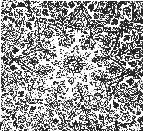|
|
White wool, good dye and high quality of water in Kerman, have resulted shiny colors, which along with magnificent images and in the capable hands of skillful weavers, have made Kerman rug, one of the most valuable carpet in the world.
In cities, Persian knot is used, which are used in fine rugs. In rural regions, both Turkish and Persian knots are used.
A particular knot, which is known as "Yek-Chin" or "Kaman Bala", makes this rug distinguished. Like many other regions, some weavers use "double Knot" or "Neqabi Knot" (mask knot) or weave rugs without knot or with "Kamaneshi Knot" (Kamanshib knot).
In double knot weaving, speed is double; for example, if somebody weaves 20 wales with Yek-Chin knot (Kaman Bala) per day, with double knot (Kamanshib) will weave 40 t0 45 wales per day. The problem with these rugs is, that those are neither beautiful nor as steady and durable as other carpets.
There are various ways to recognize rugs with Kamanshib knots from original ones woven by "Yek-Chin" knot. Rugs woven by Kamanshib become useless before getting worn, although worn-out rugs woven by Persian knots are much more precious and valuable.
In general, weaving with Kamanshib knots is not common in all regions of Kerman and is used only in Jouibar Mahan and some foothill regions.

|
|

